Minnesota New
The Met
Urban Academy
High Tech High
Country School
Henderson, MN
Providence, RI
New York City
San Diego, CA

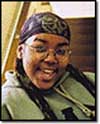
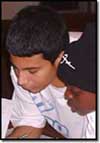
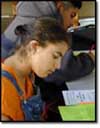
|
Learning in a New Key
“In my old school I did little pieces of everything, but it didn’t really stick to my brain.
Pieces aren’t enough.” — Maya
“There were too many students in the high school I went to before. The
teachers only had time for the motivated ones. It’s a lot harder here. These
teachers, they see all of your strong points, all your weak points,
everything.” — Freddie
“I used to throw my work out right away. Now I want to keep everything.” — Leah
— Students at Providence’s Met School
|
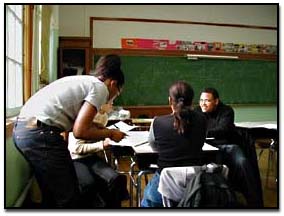
|
The blunt testimonies of “small school” students like Maya, Freddie, and Leah—and the comparisons they make with “regular” schools—certainly fuel both this interest and the critique. So does almost two decades of compelling research on small schools.
In schools with fewer than 600 youngsters, we now know, students generally learn better, drop out less, and attend more. They participate in extracurricular activities in greater numbers and get into fewer disciplinary difficulties. On college-related variables—entrance examination scores, acceptance rates, grade point averages—students from small high schools match or exceed those from large ones.
And small schools work especially well for the least advantaged students. Studies linking school size, poverty, and student achievement indicate larger schools, particularly urban ones, exacerbate the negative effects of poverty on student learning.
Nevertheless, between 1940 and 2000 the average school size rose five-fold. Seventy percent of today’s students attend schools with more than 1,000 students, reflecting the belief that larger schools afford more opportunities, a richer curriculum, and economic efficiencies. The current interest in “small learning environments” feels almost revolutionary, regardless of the affirming research.
More than personalization and the absence of bells
What first catches the eye when one enters a small school is the personalization it affords. Both the needs of individual students and the passions of individual teachers seem to find uncustomary breathing room. A first-time visitor might also be struck by what appears to be less structure than larger high schools employ: students and adults may mix more freely; no bells may mark the start and end of classes; courses may break from curricular conventions or may not even exist at all. Repeat visitors learn that in most small schools a complex infrastructure actually puts order in these freedoms.
Beyond this unmistakable personalization and openness, much else also distinguishes teaching and learning in small schools. “Sure, size makes a big difference,” explains a student at one small high school, “but what’s really different is the learning. It’s in a whole new set of keys. It’s new tunes.”
And what are these new keys and tunes? The online portfolio of student learning in small schools that follows—the culmination of a documentation and research effort begun by What Kids Can Do in the spring of 2002—provides a number of answers. Although nothing beats spending several days immersed in the rhythm and conversations of a school to understand how it reaches students, this collection aims to provide a helpful proxy.
This project’s background
The four schools featured here are all flagships in the Bill and Melinda Gates Foundation’s campaign to create a critical mass of new, inventive small high schools. They include the Minnesota New Country School (Henderson, MN), the Met (Providence, RI), Urban Academy (New York City), and High Tech High (San Diego, CA).
We started our work exploring the commonalities of student learning in these four schools. Like other ambitious small schools across the country, they share several commitments. They pair high expectations with diverse learning opportunities, personalization with community building. They value student responsibility along with adult attentiveness, real-world problem solving along with public demonstrations of student learning.
We were just as interested, though, in their distinctions. What does each school uniquely ask of its students? What does it emphasize and prize most? The differences, we imagined, reflect the schools’ founders but also their contexts: self-reliant rural Minnesota; tight-knit blue-collar Rhode Island; brash and brainy Manhattan; entrepreneurial Southern California.
As we assembled this portfolio, we shaped it to match our own commitments. One was to show rather than tell, and to take maximum advantage of the Internet’s capacity to make available primary materials (for example, the written expectations and forms that guide students and teachers at each school) to close readers (in this case, both veterans of and newcomers to small schools). Another was to convey not only the skill and extraordinary dedication of the adults guiding these young people, but their dilemmas, too.
We worked hardest, however, to place the work and voices of students at center stage, including examples from students who rarely receive that prominence. Like the small schools we studied, we believe that the quality and depth of the work students produce tell more about their learning than test scores do. And we believe an effective way to convey high standards is to show publicly student work that reflects these standards—although as we gathered examples for this collection, we looked for a range of student work and by no means just stand outs. Best or not, much of the student work we encountered in these four schools took our breath away.
Finally, we privileged student work and voice because they illustrate, better than anything else, the great hopes these schools hold for their pupils. They seek to do much more than “leave no child behind.” They want their students to take the stage and sing.
In his book Possible Lives, educator Mike Rose calls for a “capacious critique” of public education in America, one that encourages “dissent and invention, fury and hope.” He writes:
-
Public education is bountiful, crowded, messy, contradictory, exuberant, tragic, frustrating, and remarkable. We need an expanded vocabulary, adequate to both the daily joy and daily sorrow of our public schools. And we are in desperate need of rich, detailed images of possibility.
The four portfolio “entries” below, we hope, provide some of these needed images—of what is possible in schools that place learning on a human scale.
Portfolio entries
|
|
||
|
|

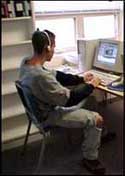 In rural Minnesota, miles separate neighbors, winters arrive early and stay late, and residents prize community and individualism alike.
It’s not surprising that a public charter school here would aim to raise self-reliant learners. In its eighth year, MNCS does just that...
In rural Minnesota, miles separate neighbors, winters arrive early and stay late, and residents prize community and individualism alike.
It’s not surprising that a public charter school here would aim to raise self-reliant learners. In its eighth year, MNCS does just that...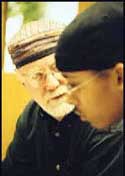 A school with the motto “one
student at a time” and where personalization runs deep seems an unlikely place to push students,
again and again, outside their comfort zone. Yet day after day, the Met challenges its students to attempt the untried or unknown ...
A school with the motto “one
student at a time” and where personalization runs deep seems an unlikely place to push students,
again and again, outside their comfort zone. Yet day after day, the Met challenges its students to attempt the untried or unknown ...
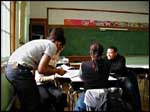
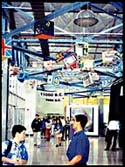 When ninth graders at High Tech High wanted to build Battle-Bots, their physics teacher saw a curricular opportunity.
The resulting course in robotics shows the unusual ways ideas spread at HTH, where an entrepreneurial spirit and new technologies go hand in hand...
When ninth graders at High Tech High wanted to build Battle-Bots, their physics teacher saw a curricular opportunity.
The resulting course in robotics shows the unusual ways ideas spread at HTH, where an entrepreneurial spirit and new technologies go hand in hand...
